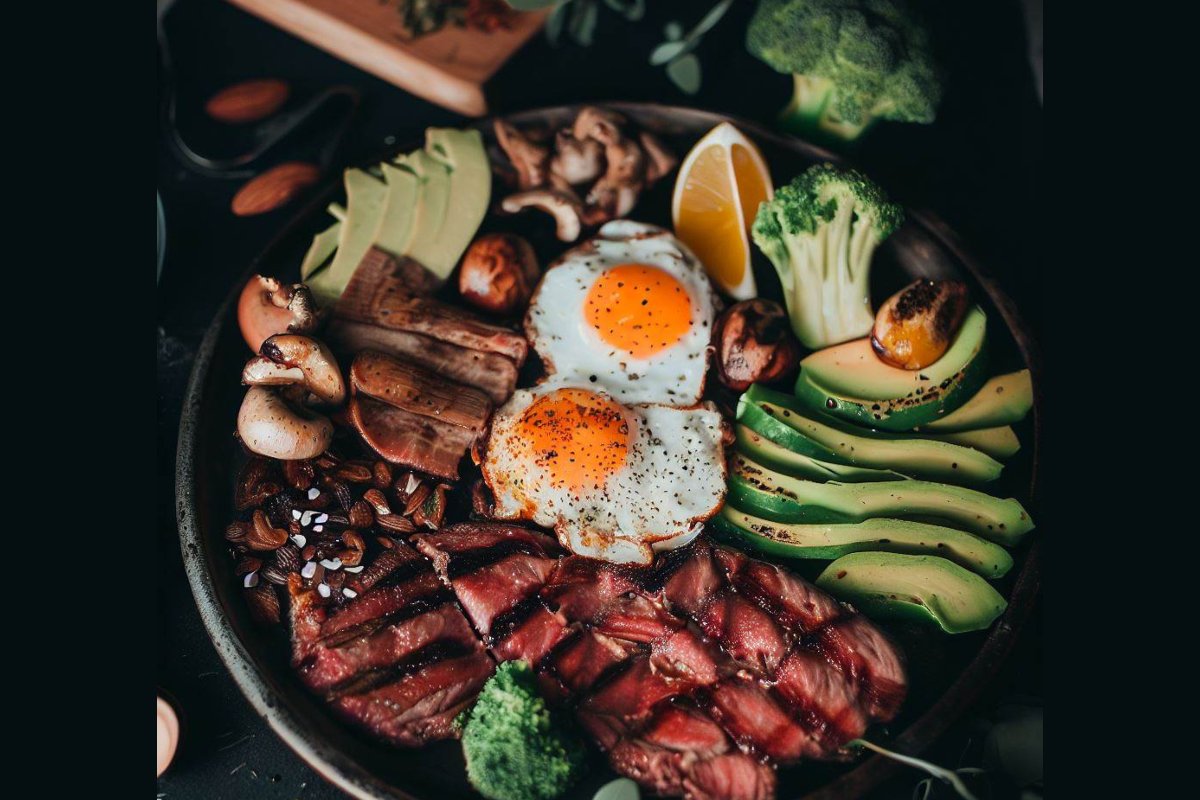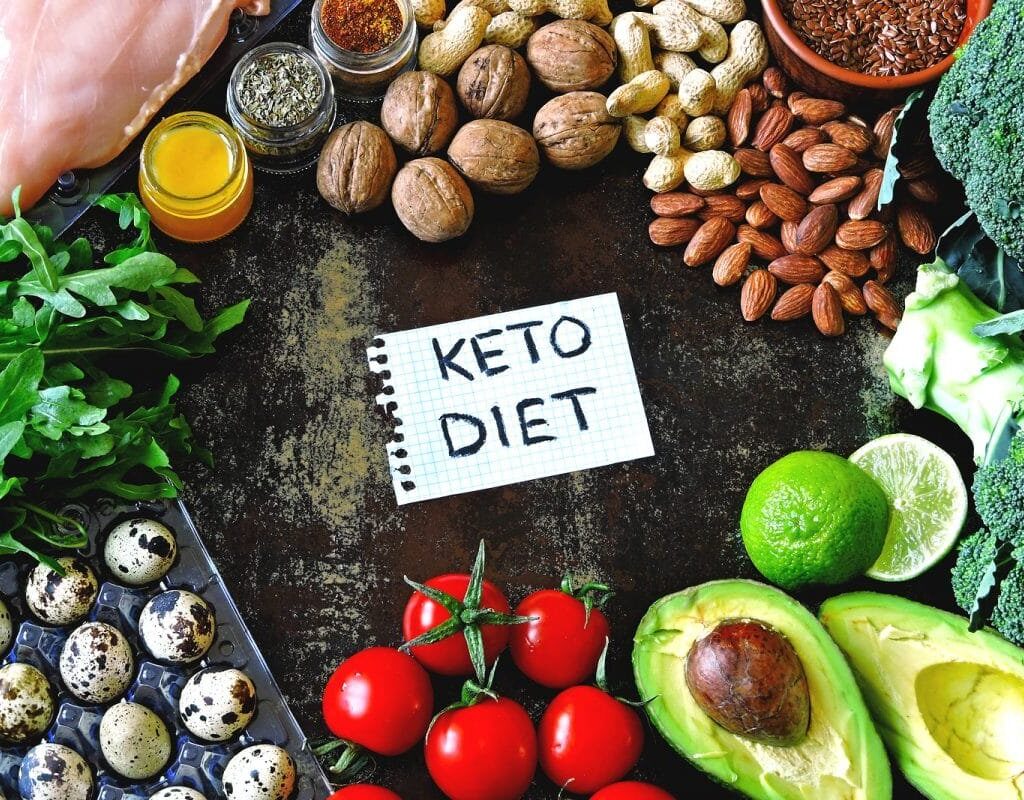The keto diet, known as the ketogenic diet has gained popularity in recent years due to its focus on reducing carbohydrates and increasing fat and protein consumption. This diet is widely used in some sports fields and has also become a trend for those looking to lose weight.
Complete Guide to the Keto Diet: What is it and how to follow it correctly?
However, it’s important to note that the keto diet isn’t right for everyone and shouldn’t be followed long-term without proper supervision and knowledge.
Although numerous studies have confirmed that it can help with weight loss, it is not a miracle solution or recommended for everyone.
Before embarking on this curious culinary style, it is essential to understand what it consists of and how to follow it correctly to avoid possible negative consequences. If you’re interested in exploring the ketogenic diet, seek guidance from an expert nutritionist who can assess your situation and provide you with personalized recommendations.
Keto Diet: Using Fatty Acids as the Primary Fuel
The keto or ketogenic diet is based on the production of ketone bodies in the body in response to a lack of energy reserves.
This form of diet has become popular and its name comes from “ketogenic diet”. Its main purpose is to use fatty acids as an energy source instead of carbohydrates.
Normally, food provides us with the nutrients and energy needed for the proper functioning of the body. Carbohydrates are the main source of energy since muscles use the glucose present in the blood.
When glucose levels are low, muscles draw on glycogen stores, which are the carbohydrates stored in the body. What happens when those reserves run out?
This is when ketosis occurs. It is a state in which the body uses fatty acids as its primary fuel. In the liver, fatty acids are converted into ketone bodies which are molecules that the body uses as an energy source instead of glucose.
In short, when the body runs out of energy reserves it uses fat as an immediate fuel, especially for muscle function.
Is the ketogenic diet right for you? Individual considerations before starting it
It has been scientifically proven to be effective for weight loss. Three main premises support this statement:
Use of fat as an energy source
During ketosis the body is forced to use fat as its main source of energy. Although this process is not as efficient as when using glucose, it involves greater energy expenditure, which contributes to weight loss.
Carbohydrate limitation
By reducing or eliminating carbohydrates, we prevent them from accumulating and turning into fat. Excess carbohydrates in the diet are one of the main causes of obesity and overweight since they are stored as fat in the body.
Increased satiety and reduced appetite
Several studies have shown that a diet based on fats and proteins, as in the ketogenic diet, helps control hunger and provides a feeling of fullness for longer, however, this does not necessarily mean that it is 100% healthy since it is not suitable for everyone and has its risks.
This nutritional approach forces the body to enter a state of ketosis which can be unfavorable for certain people. For example, the brain needs glucose as its main source of energy and cannot rely solely on ketone bodies.
In extreme situations, ketosis can lead to ketoacidosis, an increase in acidity in the blood that adversely affects organs and can have serious consequences.
The ketogenic diet isn’t recommended for people with:
- metabolic diseases,
- thyroid problems,
- kidney, liver, or pancreas
- diabetics or patients with eating disorders.
In addition, following this diet in the long term is not advisable due to its nutritional imbalance. The lack of adherence and its restrictive nature can lead to the rebound effect and make it difficult to maintain weight.
This diet can be effective under certain circumstances and with specific objectives but it is always recommended to have the supervision of a nutrition professional. Each person is unique, so it is important to adapt the diet to individual needs and consider risks and contraindications before starting it.
Complete list of foods allowed and prohibited on a ketogenic diet
To achieve the state of ketosis on a keto diet, simple and complex carbohydrates are reduced to the maximum. Depending on each person, their physical condition and level of exercise, the maximum daily carbohydrate limit is usually set between 20-50 grams.

The approximate daily calorie intake ratio would be as follows:
- 60-75% of fat
- 25-30% of proteins
- 5-10% of carbohydrates
Therefore, we are not in the same parameters as the paleo diet in which a greater consumption of carbohydrates such as certain fruits and vegetables is allowed. A ketogenic diet is mostly about getting your calories from fatty foods and some protein. Among the most consumed foods the following stand out:
- All types of meat, including red meat
- Fish and seafood, especially blue
- Eggs, including the yolk
- Whole-fat dairy products, preferring the fattest ones (cream, cream, aged cheeses) and limiting milk
- Cocoa and pure sugar-free chocolate
- Avocado
- Nuts rich in fat
- Coconut and its derivatives (milk, oil, flour)
- Vegetable oils (olive, rapeseed, sunflower, seed…)
- Whole or ground seeds (flax, pumpkin, sunflower, chia, poppy, sesame…)
- Vegetable creams and pate made from nuts (peanut butter, almond butter, tahini…)
To achieve and maintain ketosis, it is necessary to restrict the consumption of any type of cereal, whether it has gluten or not, in all its forms (wheat, bread, flour, pasta), legumes, fruits, vegetables and vegetables, especially those with a higher carbohydrate content (which are usually the sweetest).
Of course, the consumption of added sugars is practically completely eliminated.
Keto foods: how to adapt traditional recipes to enter ketosis
To avoid falling into monotony when looking to enter ketosis, it is best to vary the source of protein and its presentation, taking advantage above all of the versatility of eggs. Many common recipes in our diet are suitable for a keto diet with minor variations.
For example, when making a tuna tortilla or a scrambled egg with ham, we can eliminate the typical onion from the stir-fry or fill a roasted chicken with nuts and cheese instead of potatoes and vegetables.
Dried or dried fruits, such as dates, apricots and raisins, must also be eliminated, since they concentrate much more sugar than the fresh version and are not comparable to nuts.
The ketogenic diet offers a variety of culinary options for those looking to enter ketosis but it’s critical to consider individual needs and restrictions. It is always recommended to consult a nutrition professional before starting any type of diet.
Here are some well-known channels and websites that offer recipes and videos related to the keto diet.
- Diet Doctor
This website offers a wide variety of keto recipes, as well as instructional videos on how to prepare them. You can explore its recipe section and filter by categories to find specific videos that suit your tastes and preferences. - Keto Connect
The KetoConnect YouTube channel is a source of videos on ketogenic recipes. They offer a wide range of recipes from main courses to desserts and provide detailed step-by-step instructions for each of them. - Tasty
Although it doesn’t focus exclusively on the keto diet, Tasty’s website and YouTube channel have a section dedicated to low-carb recipes. You can find videos of delicious and creative keto recipes. - Headbanger’s Kitchen
This YouTube channel features keto and low-carb recipes with a creative twist. The presenter Sahil Makhija offers entertaining and practical videos with recipes that range from main courses to snacks and desserts.
Remember that when searching for keto recipe videos, it’s important to verify the quality and credibility of the source. It is always recommended to consult different sources and adapt the recipes to your individual needs and preferences. Enjoy exploring new keto recipes and bon appetites.




